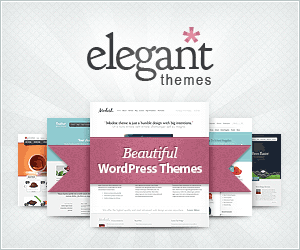Customer-centric web design: 5 Powerful Ways to Win in 2025
Why Your Website Needs a Human Touch to Succeed
Customer-centric web design is the practice of creating websites that prioritize user needs, behaviors, and goals over business features or aesthetic preferences. Here’s what it means for your business:
• Focus on users first – Design decisions based on customer research and feedback
• Solve real problems – Address actual pain points rather than assumed needs
• Simplify the experience – Remove friction from key user journeys
• Build trust and credibility – Use social proof and transparent communication
• Measure what matters – Track user satisfaction alongside conversion metrics
The numbers tell a stark story. 46% of people will leave a website because of unclear messaging, while 37% bounce due to poor design and confusing navigation. That’s nearly half your potential customers walking away before they even understand what you offer.
Yet most websites still put the company’s agenda first. They showcase features instead of benefits. They use industry jargon instead of customer language. They prioritize what looks impressive over what actually works.
This human-centered approach isn’t just about being nice – it’s about being profitable. Companies with clearly defined customer profiles are 70% more likely to exceed their revenue goals. When you design for real people with real needs, everything improves: engagement, trust, conversions, and long-term loyalty.
I’m Randy Speckman, and over the past decade I’ve helped more than 500 small business owners transform their websites from company brochures into customer magnets. Through strategic customer-centric web design, my clients have seen dramatic improvements in both user satisfaction and bottom-line results.

Important Customer-centric web design terms:
– Content optimization strategies
– Online presence optimization
– Website speed optimization tips
Understanding Customer-Centric Web Design
Think about the last time you visited a website and immediately felt confused. Maybe you couldn’t figure out what the company actually did, or the navigation made no sense, or you just felt like the site was talking at you instead of to you. That frustration? That’s what happens when websites are built around what companies want to show rather than what customers need to see.
Customer-centric web design flips this approach completely. Instead of asking “What do we want to say about our amazing features?” it starts with “What do our customers actually need to accomplish?” It’s the difference between a company brochure and a helpful guide.
This isn’t some trendy new concept either. Back in 1954, management guru Peter Drucker said that truly customer-focused organizations exist “to create and keep a customer.” What’s changed is how crucial this philosophy has become for websites. In our digital-first world, your site often is your first impression, your sales team, and your customer service desk all rolled into one.
The results speak for themselves: 82% of brands report improved value propositions after they take time to really understand their buyer personas. When you know who you’re designing for, suddenly every decision becomes clearer and more effective.
| Product-Centric Approach | Customer-Centric Approach |
|---|---|
| Showcases company features and achievements | Addresses user goals and pain points |
| Measures page views and aesthetic appeal | Tracks task completion and user satisfaction |
| Forces users to adapt to company’s preferred flow | Adapts experience to match natural user behavior |
| Uses internal jargon and technical language | Speaks in customer’s everyday language |
| Prioritizes what looks impressive | Prioritizes what actually works |
How Customer-Centric Differs From Product-Centric
The gap between these two approaches shows up in three key areas, and honestly, it’s pretty dramatic when you see them side by side.
Core Focus is where the biggest difference lives. Product-centric sites are like that friend who only talks about themselves at parties. They showcase company features, list capabilities, and highlight achievements. Customer-centric web design, on the other hand, focuses on user goals, addresses real pain points, and emphasizes the outcomes people actually care about.
Success Metrics tell a completely different story too. Product-focused sites celebrate page views, time on site, and how pretty everything looks. Customer-focused sites track whether people can actually accomplish what they came to do, how satisfied they feel, and whether conversions represent real value for both sides.
Journey Ownership might be the most telling difference. Traditional sites force users to follow the company’s preferred path, like a rigid tour guide. Customer-centric sites adapt to match how people naturally want to move through information and decisions.
I’ve seen this change happen dozens of times with clients. Their original site might look impressive with flashy animations and detailed feature lists, but users bounce because they can’t quickly understand what the company does or how it helps them. After implementing customer-centric principles, the same business sees dramatic improvements in both engagement and actual conversions.
Why It Matters in 2024
We’re living in what experts call the digital-first era, where 89% of companies have implemented or are planning digital-first strategies. Your website isn’t just a digital business card anymore—it’s often the most important touchpoint with potential customers.
The stakes keep getting higher too. Statistic about 46% of people leaving websites because of unclear messaging? That’s not just a number—that’s real revenue walking out the door every single day. In today’s competitive landscape, you literally have seconds to prove your value before users click back to Google and try your competitor instead.
But here’s the exciting part: businesses that accept customer-centricity don’t just survive this challenge, they absolutely thrive. They build deeper trust, create stronger relationships, and generate more sustainable growth than their product-focused competitors. It’s not just about being nice to users—it’s about being smart about business.
Core Principles & Benefits of Customer-Centric Web Design

Building a truly customer-centric web design isn’t about following the latest trends or copying what your competitors do. It’s about understanding what makes your customers tick and creating an experience that feels like it was made just for them.
The magic happens when you start with empathy mapping—really getting inside your customers’ heads to understand their daily frustrations, their goals, and what keeps them up at night. I’ve seen too many businesses skip this step and wonder why their beautiful websites don’t convert. The answer is simple: they’re solving the wrong problems.
Accessibility should never be an afterthought. When you design for users with different abilities and technical skills, you create a better experience for everyone. It’s like building ramps instead of stairs—they help people in wheelchairs, but they also help parents with strollers, delivery workers, and anyone who’s ever struggled with heavy bags.
Smart personalization takes this even further. You’re not trying to be everything to everyone, but you are showing different visitors the content that matters most to them. A returning customer might see their account dashboard, while a first-time visitor sees your strongest social proof.
The key is continuous feedback integration. Your customers are constantly telling you what they need through their behavior, their comments, and their questions. The best websites I’ve designed become living, breathing entities that evolve based on real user input.
Online businesses that can showcase customer centricity on their own website will see massive growth in their website analytics and visibility, and I’ve witnessed this change countless times. When you nail customer-centricity, everything else—brand loyalty, word-of-mouth referrals, and revenue growth—follows naturally.
Five Pillars Every Site Needs
After working with hundreds of businesses, I’ve identified five non-negotiable elements that every customer-centric website must have. Miss any of these, and you’re leaving money on the table.
Clear customer personas form your foundation. You need to know exactly who you’re talking to—not just demographics, but their real motivations and pain points. Are they rushed decision-makers who need quick answers, or careful researchers who want detailed comparisons?
Seamless navigation means organizing your site around what users actually want to do, not how your company is structured internally. Your customers don’t care that you have separate departments for sales and support—they just want to solve their problem.
Mobile responsiveness isn’t optional anymore. With most traffic coming from phones and tablets, your site needs to work flawlessly on every screen size. I’ve seen businesses lose half their potential customers because their mobile experience was clunky.
Fast performance directly impacts everything else. When pages load slowly, users assume your business is unreliable. Google’s research shows that even a one-second delay can reduce conversions by 7%.
Trust elements seal the deal. Real customer testimonials, clear contact information, security badges, and transparent policies tell visitors they’re in safe hands. Without these, even the most beautiful design feels suspicious.
Tangible Business Gains
The results of implementing customer-centric web design speak for themselves, and they show up in ways that directly impact your bottom line.
Engagement metrics improve across the board. When visitors find what they’re looking for quickly, they stay longer, explore more pages, and interact with your content. One of my clients saw their average session duration increase by 40% after we redesigned around user goals instead of company features.
Customer retention skyrockets when people have positive experiences. Users bookmark sites that consistently meet their needs and return when they have new problems to solve. This creates a compound effect—each positive interaction builds stronger loyalty.
Net Promoter Scores climb because satisfied users become your biggest advocates. They recommend your business to friends, leave positive reviews, and defend your brand in online discussions. This organic word-of-mouth marketing is worth its weight in gold.
Average order values increase when customers trust your site and find the buying process smooth. They’re more likely to add extra items, choose premium options, or sign up for longer commitments when the experience feels right.
One manufacturing client saw their lead generation jump 29.5% after we shifted their messaging from technical specifications to real-world problem solving. Instead of listing product features, we focused on the specific challenges their customers faced every day. The difference was night and day—suddenly, visitors could see themselves in the story we were telling.
Implementation Roadmap: From Research to Launch

Implementing customer-centric web design requires a structured approach that puts user research at the foundation of every decision. Here’s the roadmap we use with our clients to ensure successful outcomes:
The process begins with deep customer understanding through interviews, surveys, and behavioral analysis. We then map the complete customer journey, identifying touchpoints, emotions, and potential friction points. This research informs our design and content strategy, which we validate through prototyping and iterative testing.
Throughout the process, we maintain an agile approach that allows for quick adjustments based on user feedback. This isn’t a one-and-done project—it’s an ongoing commitment to serving your customers better.
For more detailed guidance on the user experience design process, check out our comprehensive guide: More info about User Experience design
Step 1: Research & Personas for Customer-Centric Web Design
The foundation of any successful customer-centric website is thorough user research. We start by gathering both quantitative and qualitative data to understand who your customers really are and what they need from your site.
Customer Interviews and Surveys: We conduct structured interviews with existing customers, prospects, and even lost leads to understand their goals, frustrations, and decision-making processes. Key questions include:
– What brought you to our website initially?
– What information were you looking for?
– Where did you get stuck or confused?
– How do you typically research solutions like ours?
Analytics Deep Dive: We analyze your existing website data to identify patterns in user behavior, popular content, and drop-off points. Google Analytics user flow reports are particularly valuable for spotting where users abandon their journey.
Buyer Profile Development: Based on this research, we create detailed customer personas that include demographics, motivations, pain points, and preferred communication styles. These aren’t generic marketing personas—they’re specific profiles based on real data about your actual customers.
Pain-Point Matrix: We map customer challenges against your solutions to ensure every page addresses real user needs rather than assumed problems.
Top Research Tools We Recommend:
– Google Analytics for behavioral data
– Hotjar for session recordings and heatmaps
– Typeform or Google Forms for customer surveys
– Calendly for scheduling user interviews
– Miro for collaborative persona development
Step 2: Design & Content Aligned With Customer-Centric Web Design
Once we understand your customers, we craft design and content that speaks directly to their needs and motivations. This phase focuses on translating research insights into tangible website elements.
StoryBrand Messaging Framework: We structure your content around the customer as the hero of their own story, with your business as the guide helping them achieve their goals. This means leading with customer benefits rather than company features.
Benefit-Driven Copy: Every page should answer the user’s implicit question: “What’s in it for me?” Instead of “We offer comprehensive digital marketing services,” we write “We help small businesses double their online leads in 90 days.”
Inclusive Visual Design: We select images, colors, and layouts that reflect your diverse customer base and ensure accessibility for users with different abilities and technical constraints.
SEO-Optimized Content: We integrate relevant keywords naturally while maintaining focus on user value. The goal is content that serves both search engines and real people.
Clear Value Propositions: Within seconds of landing on any page, users should understand what you offer, who it’s for, and why they should care.
Step 3: Build, Test, Iterate
The final implementation phase focuses on validation and continuous improvement. We don’t just launch and hope for the best—we test, measure, and refine based on real user behavior.
Usability Testing: Before launch, we conduct sessions with representative users to identify any remaining friction points or confusion. Even testing with five users can reveal critical insights.
Heatmap Analysis: We use tools like Hotjar to see where users actually click, scroll, and spend time on your pages. This often reveals gaps between intended and actual user behavior.
Multivariate Testing: We test different versions of key pages to optimize conversion rates and user satisfaction. This might include testing different headlines, call-to-action buttons, or page layouts.
Feedback Loops: We implement systems for ongoing customer input, including feedback forms, exit-intent surveys, and regular user interviews.
Quick Wins Identification: We prioritize changes that can be implemented quickly but have significant impact on user experience, such as improving page load speeds or clarifying confusing navigation labels.
Measuring Success & Continuous Improvement

Here’s the truth about customer-centric web design: if you’re not measuring the right things, you’ll never know if your efforts are actually helping your customers or your business. Too many companies get excited about vanity metrics like page views while missing the indicators that actually matter.
The stakes are real. Research shows that 46% of people will leave a website because of a lack of message, which means every unclear element on your site is costing you potential customers. But when you track the right metrics and act on what they tell you, you can turn your website into a customer satisfaction machine that drives real business growth.
We’ve learned this from working with hundreds of clients over the years. The businesses that thrive are the ones that measure both user happiness and business outcomes, then use that data to make their sites work better for everyone.
Customer-Centric Web Design Metrics That Matter
Let’s talk about the metrics that actually tell you whether your site is serving your customers well. Task completion rate is your north star—what percentage of visitors actually accomplish what they came to do? Whether that’s making a purchase, scheduling a call, or finding the information they need, this metric reveals if your site truly works for real people.
Time on task gives you another crucial insight. When someone can complete their goal quickly and easily, that’s usually a win. If it takes forever for users to find your contact information or figure out your pricing, you’ve got work to do.
Your Net Promoter Score tells you something analytics can’t: would your users actually recommend your site to a friend? We survey our clients’ customers regularly, and the answers often surprise us. Sometimes a site that looks great performs poorly because it doesn’t solve real problems.
Revenue per visit connects user experience directly to business results. When you make it easier for people to understand your value and take action, this number goes up. One of our clients saw their revenue per visit increase by 34% after we simplified their checkout process based on user feedback.
Don’t forget about return visitor rates either. People come back to sites that provide value. If your return rate is low, it might mean your content isn’t hitting the mark or your user experience needs work.
The beauty of customer-centric metrics is that they align your team around what really matters: creating value for the people you serve.
Keeping the Site Customer-Centric After Launch
Here’s where many businesses drop the ball. They invest in creating a customer-focused website, then treat it like a museum piece that never changes. The most successful sites we manage stay customer-centric through continuous optimization and regular attention.
We schedule quarterly check-ins with our clients to review user feedback, dive into analytics, and identify new opportunities. These aren’t massive overhauls—they’re thoughtful adjustments based on how real people are actually using the site.
Content refreshes happen naturally when you stay connected to your customers. As their needs evolve and new questions come up, your site should evolve too. We update our clients’ FAQ sections, add new case studies, and refine messaging based on the language customers actually use.
The magic happens in micro-iterations—small changes that add up to big improvements. Maybe it’s tweaking a confusing headline, adding a missing piece of information, or making a button more obvious. These tiny adjustments, done consistently, keep your site working better for users over time.
We also help our clients create feedback loops that never stop. Exit surveys, customer interviews, and simple feedback forms give you a direct line to user insights. When someone takes the time to tell you what’s not working, that’s gold.
For practical strategies on maintaining excellent user experience long-term, check out our detailed guide: More info about continuous UX tips
The companies that win in the long run understand that customer-centric web design isn’t a destination—it’s an ongoing commitment to serving your users better every single day.
Conclusion & Next Steps
Here’s what we’ve learned: Customer-centric web design isn’t just about being nice to your users. It’s about building a website that actually works for real people with real problems. When you stop talking about yourself and start solving customer challenges, everything changes.
The change doesn’t happen overnight, but it does happen. Our clients tell us the same story over and over: better engagement, stronger trust, more conversions, and customers who actually stick around. But the best part? They build relationships that last.

At Randy Speckman Design, we’ve helped over 500 businesses make this shift. We don’t just redesign websites—we help you understand your customers so well that every design decision becomes obvious. Our approach combines deep user research with strategic design and ongoing optimization to create websites that serve your customers while hitting your business goals.
Here’s the reality check: nearly half your potential customers are leaving because your website doesn’t speak their language or solve their problems. Every day you wait is money walking out the door. But here’s the good news—this is completely fixable.
The question isn’t whether you can afford to implement customer-centric web design. It’s whether you can afford to keep losing customers to websites that actually understand what people need.
Maybe you’re starting from scratch. Maybe you’re fixing a site that looks great but doesn’t convert. Either way, we can help you create something your customers will love—and that drives real results for your business.
Your customers are out there right now, searching for solutions you provide. They’re just waiting for a website that gets them, speaks their language, and makes their life easier. Let’s give them exactly that.
Ready to turn your website into a customer magnet? We’re here to help you implement these principles and see the results for yourself. Learn more about our approach to building websites that work: More info about affordable growth
Your customers deserve better. Your business deserves better. Let’s build it together.




